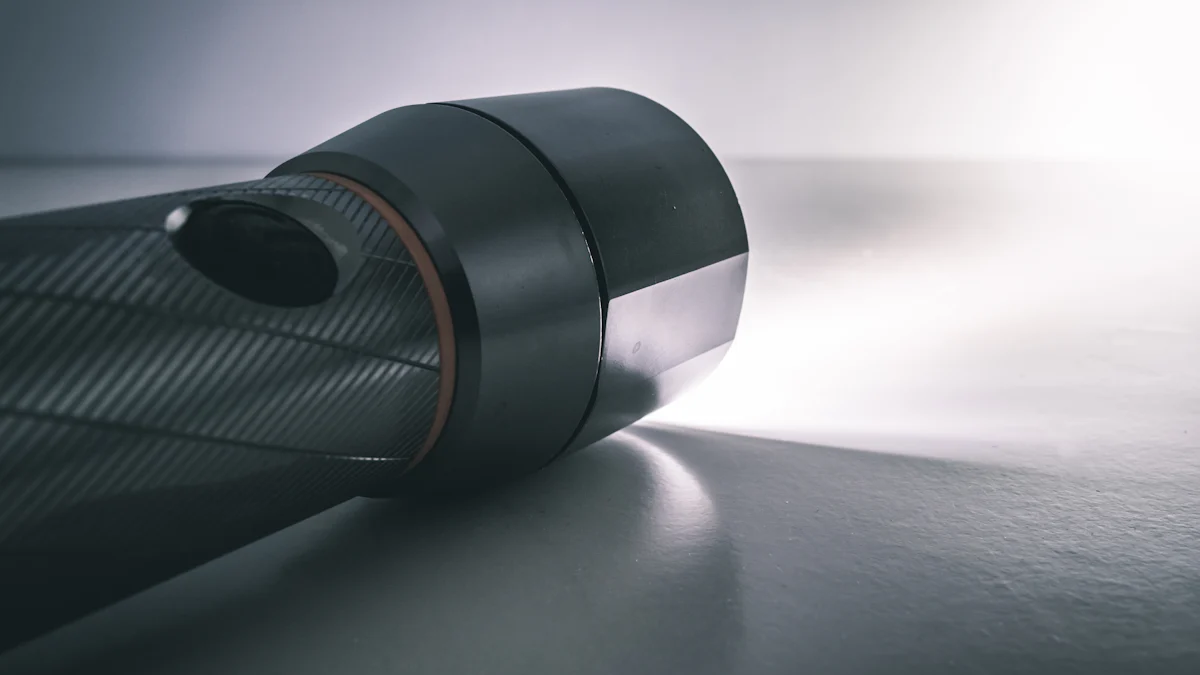How to Manage Flashlight Imports for Your Wholesale Business

Managing flashlight imports effectively is essential for the success of your wholesale business. It helps you reduce costs, maintain product quality, and streamline operations. When you handle imports properly, you can avoid delays, meet customer expectations, and stay competitive in the market.
You may face challenges like finding reliable suppliers, ensuring compliance with regulations, and managing shipping logistics. Addressing these concerns early can save you time and money. By focusing on quality control and cost management, you can build trust with buyers and grow your wholesale products portfolio.
Learning how to manage flashlight imports for your wholesale business will help you succeed in selling wholesale and achieving long-term growth.
Key Takeaways
Look for trustworthy suppliers to get good products on time. Check both local and foreign options that fit your business.
Study market trends by doing good research. Learn what customers like and see what competitors sell to pick the right items.
Follow legal rules by getting permits and correct papers ready. This stops delays and fines when importing goods.
Pick the best shipping option based on price and speed. Match your budget with delivery times to make shipping better.
Use strong quality checks. Inspect items before shipping and have a clear return plan for bad products.
Research and Planning for Wholesale Flashlight Imports
Effective research and planning are the foundation of managing flashlight imports successfully. By identifying reliable suppliers, understanding market trends, and comparing costs, you can streamline your wholesale operations and make informed decisions.
Identifying Reliable Suppliers
Domestic vs. International Options
Choosing between domestic and international suppliers depends on your business needs. Domestic suppliers often provide faster shipping and easier communication. However, international suppliers, especially from regions like Asia, may offer lower production costs and a wider variety of flashlight designs. Evaluate your priorities to decide which option aligns with your goals.
Evaluating Supplier Credibility
Finding trustworthy wholesale suppliers requires diligence.
Conduct thorough background research on manufacturers.
Assess their reputation in the LED flashlight industry.
Check for recent complaints about quality, patents, or service delivery.
Reliable suppliers ensure consistent product quality and timely delivery, which are essential for selling wholesale successfully.
Understanding Market Trends and Demand
Conducting Market Research
Understanding your target market helps you stock the right products. Research customer preferences, seasonal demands, and popular flashlight features like brightness levels or rechargeable batteries. Use online tools, surveys, and industry reports to gather insights.
Analyzing Competitor Strategies
Competitor strategies reveal valuable information about market trends and pricing benchmarks. By studying their pricing, you can develop competitive strategies that address customer needs. Instead of focusing solely on offering the lowest price, enhance your value proposition. For example:
Examine competitors' pricing strategies.
Offer solutions to customer pain points, even if your price is slightly higher.
This approach builds trust and attracts loyal buyers.
Comparing Costs and Order Requirements
Negotiating MOQs
Minimum order quantities (MOQs) can impact your budget. Negotiate with suppliers to find a balance between their requirements and your purchasing capacity. Some suppliers may lower MOQs for long-term partnerships or bulk orders.
Balancing Costs with Order Size
Order size affects your overall costs. Larger orders often reduce per-unit costs but require more upfront investment. Calculate your storage capacity and expected demand before placing orders. Striking the right balance ensures profitability without overstocking.
By focusing on these steps, you’ll learn how to manage flashlight imports for your wholesale business effectively. This preparation will help you build strong supplier relationships, meet market demands, and optimize costs.
Navigating Legal and Compliance Requirements
Navigating legal and compliance requirements is a critical step in learning how to manage flashlight imports for your wholesale business. Proper documentation, understanding tariffs, and meeting safety standards ensure smooth operations and avoid costly penalties.
Import Permits and Documentation
Required Licenses and Permits
To import flashlights into the United States, you must obtain an Import Export Code (IEC) from the Directorate General of Foreign Trade (DGFT). This code ensures compliance with the Foreign Trade Policy (FTP) of the U.S. government. Depending on the type of flashlights, additional certifications may also be necessary. Always verify the specific requirements for your product category to avoid delays.
Preparing Accurate Documentation
Accurate documentation is essential for customs clearance. Common mistakes businesses make when preparing import documents include:
Incomplete commercial invoices.
Incorrect Harmonized System (HS) codes.
Ignoring import regulations.
Insufficient record-keeping.
Poor packaging that leads to damage claims.
Choosing unreliable freight forwarders.
Avoid these errors by double-checking all paperwork and working with experienced professionals.
Customs Duties and Taxes
Understanding Tariffs and Fees
Customs duties and tariffs vary based on the country of origin and the type of flashlight. Research the applicable Harmonized Tariff Schedule (HTS) codes to determine the correct classification. Misclassification can lead to fines or delays, so accuracy is crucial.
Managing Tax Obligations
You must account for import taxes, including value-added tax (VAT) or goods and services tax (GST), depending on your market. Keep detailed records of all transactions to simplify tax filings and audits. Partnering with a customs broker can help you navigate these obligations efficiently.
Product Safety Standards
Ensuring Compliance with Electrical Standards
Flashlights must meet international safety standards to ensure reliability and customer safety. For example:
IEC 60079 standards address explosion protection for intrinsically safe flashlights.
The ATEX directive in Europe requires a declaration of conformity for hazardous environments.
The North American Class/Division system outlines safety requirements for specific locations.
Conduct rigorous inspections and adhere to ANSI/NEMA FL1 standards for performance testing. Compliance with IEC 60529 (IP Code) ensures protection against dust and water.
Meeting Labeling and Packaging Rules
Proper labeling and packaging are essential for selling wholesale. Include clear product descriptions, safety warnings, and compliance marks like CE or UL. This not only meets legal requirements but also builds trust with buyers and wholesale suppliers.
By addressing these legal and compliance requirements, you can streamline your import process and focus on selling wholesale effectively.
Logistics and Shipping for Flashlight Imports

Efficient logistics and shipping play a vital role in ensuring your flashlight imports arrive on time and in good condition. Choosing the right shipping method, managing risks, and tracking shipments are essential steps to streamline your wholesale operations.
Choosing the Best Shipping Method
Air, Sea, and Land Freight Options
You have several options for transporting flashlight imports. Air freight offers the fastest delivery but comes with higher costs. Sea freight is more economical for bulk orders, though it requires longer transit times. Land freight works well for regional deliveries and can bridge the gap between ports and warehouses. Evaluate your shipment size, urgency, and budget to select the most suitable method.
Balancing Cost and Delivery Time
Balancing cost and delivery time requires strategic planning. Consider these approaches:
Use transportation options like ground or express services to match your timeline and budget.
Collaborate with freight shipping or third-party logistics (3PL) providers to outsource complex tasks. This reduces costs and improves delivery efficiency.
Optimize warehouse operations by designing layouts for faster picking and using inventory management tools. These steps enhance transport timelines and reduce delays.
Managing Shipping Risks
Partnering with Freight Forwarders
Freight forwarders simplify the shipping process by handling documentation, customs clearance, and carrier coordination. Partnering with a reliable forwarder minimizes risks and ensures smooth delivery. Look for forwarders with experience in flashlight imports and a strong track record in wholesale logistics.
Mitigating Delays and Damage
Shipping delays and product damage can disrupt your operations. To mitigate these risks:
Use protective packaging to safeguard flashlights during transit.
Insure your shipments to cover potential losses.
Communicate regularly with carriers to address issues promptly. Proactive measures reduce disruptions and maintain customer satisfaction.
Tracking and Managing Shipments
Monitoring Timelines
Tracking shipments helps you monitor progress and anticipate delays. Use tracking tools provided by carriers or invest in supply chain management software. These tools give you real-time updates, allowing you to adjust plans as needed.
Setting Realistic Delivery Expectations
Set realistic delivery expectations with your customers. Factor in potential delays due to customs clearance or weather conditions. Clear communication builds trust and ensures a positive experience when selling wholesale.
By mastering logistics and shipping, you’ll learn how to manage flashlight imports for your wholesale business effectively. These strategies help you reduce costs, minimize risks, and maintain timely deliveries.
Ensuring Quality Control in Flashlight Imports

Quality control ensures that the flashlights you import meet your customers' expectations and comply with industry standards. By conducting thorough inspections and addressing defective products effectively, you can maintain your reputation and build trust with wholesale buyers.
Pre-shipment Inspections
Pre-shipment inspections are essential to verify the quality of your flashlight imports before they leave the supplier’s facility. Following a structured inspection process minimizes the risk of receiving subpar products.
Verifying Product Specifications
To ensure the flashlights meet your requirements, follow these key steps:
Pre-Production Inspection: Inspect materials and equipment before manufacturing begins.
During Production Inspection: Randomly select samples during production to assess quality.
Final Random Inspection: Evaluate the entire batch after production is complete.
Loading Supervision: Oversee packaging and loading to prevent damage during transit.
Additionally, conduct visual inspections to check for exterior defects, functional testing to evaluate performance, and safety assessments to ensure compliance with standards like ANSI/NEMA FL1 and IEC 60529.
Testing for Quality Standards
Testing ensures the flashlights perform as advertised. Focus on:
Power Output: Measure light intensity and compare it to specifications.
Beam Distance: Assess the flashlight’s effective range.
Battery Runtime: Verify runtime under different settings.
Waterproof Performance: Submerge the flashlight to test its sealing.
Impact Resistance: Conduct drop tests to evaluate durability.
These tests help you identify and address issues like overheating, electrical insulation, or missing compliance marks.
Handling Defective Products
Even with rigorous inspections, defective products may occasionally slip through. Having a clear plan to handle these situations protects your business and strengthens relationships with wholesale suppliers.
Establishing a Returns Policy
A well-defined returns policy simplifies the process of addressing defective items. Include:
Clear guidelines for reporting defects.
Timeframes for initiating returns.
Conditions for accepting returned products.
This policy ensures transparency and builds confidence among your buyers.
Managing Refunds or Replacements
When handling defective products, act promptly to resolve issues. Offer refunds or replacements based on the severity of the defect. For example:
Replace flashlights with faulty switches or damaged LEDs.
Refund buyers if the defect significantly impacts usability.
By addressing defects quickly, you demonstrate your commitment to quality and customer satisfaction.
Tip: Keep detailed records of defects and resolutions. Use this data to identify recurring issues and work with suppliers to improve future shipments.
By prioritizing quality control, you’ll learn how to manage flashlight imports for your wholesale business effectively. This approach ensures your products meet market demands and maintain high standards.
Cost Management and Pricing Strategies for Wholesale
Managing costs and setting the right prices are essential for running a successful wholesale business. By negotiating effectively with suppliers and calculating total import costs accurately, you can maximize profits while staying competitive.
Negotiating with Suppliers
Building Long-term Relationships
Strong relationships with suppliers lead to better deals and consistent quality. Focus on building trust by maintaining clear communication and honoring agreements. Personalize your interactions and target decision-makers to achieve a 100% response rate. Assess the creditworthiness of your suppliers to reduce risks and ensure reliability. These steps create a foundation for long-term partnerships that benefit your wholesale operations.
Leveraging Bulk Discounts
Bulk discounts can significantly lower your costs. To take full advantage, source from countries with Free Trade Agreements (FTAs) that reduce or eliminate import duties on flashlights. Additionally, consider suppliers located closer to your region to cut freight costs and shipping times. These strategies help you minimize overhead expenses and improve profit margins.
Calculating Total Import Costs
Accounting for Hidden Fees
Hidden fees can quickly add up and impact your bottom line. Common costs include customs duties, storage fees, and insurance. Work with a customs broker to identify all potential charges and avoid surprises. Accurate cost calculations ensure you maintain profitability while managing your wholesale business efficiently.
Setting Competitive Wholesale Prices
Setting the right price requires balancing costs with market demand. Consider factors like brightness, battery life, and durability when pricing your flashlights. For example, higher durability justifies a premium price, while adjustable settings enhance value for customers. Evaluate your competitors’ pricing and focus on offering value rather than just the lowest price. This approach attracts quality-conscious buyers and strengthens your position in the wholesale market.
By mastering cost management and pricing strategies, you can optimize your flashlight imports and grow your wholesale business effectively.
Managing flashlight imports for your wholesale business involves several critical steps. Start by optimizing your supply chain, adhering to regulations, and understanding market demands. The table below highlights essential strategies for effective import management:
Strategy | Description |
|---|---|
Optimize Supply Chain | Import flashlights through the most efficient ports to enhance logistics and supply chain management. |
Understand Competitor Pricing | Analyze competitors' pricing to inform your own procurement strategy, focusing on value rather than just low cost. |
Comprehend Quality Demand | Use price analysis to understand the quality of flashlights that are in high demand for imports. |
Adhere to Regulations | Obtain an Import Export Code (IEC) and comply with the Foreign Trade Policy for successful imports. |
To apply these strategies and optimize your operations:
Train your sales team to boost product expertise.
Invest in a user-friendly website to maximize online visibility.
Use B2B order software to streamline ordering processes.
Build strong client relationships by offering personalized service.
Staying organized and proactive ensures smooth operations and long-term success. Apply these insights to strengthen your wholesale business and meet customer expectations effectively.
FAQ
What factors should you consider when choosing a flashlight supplier?
Evaluate the supplier's reputation, product quality, and pricing. Check reviews, request samples, and verify certifications. Prioritize suppliers with consistent delivery records and transparent communication.
How can you ensure compliance with import regulations?
Research the required permits, safety standards, and labeling rules for your target market. Work with customs brokers or legal experts to avoid errors. Keep all documentation accurate and up to date.
What is the best way to reduce shipping costs for flashlight imports?
Choose sea freight for bulk orders to save money. Consolidate shipments to minimize fees. Partner with experienced freight forwarders to optimize routes and negotiate better rates.
How do you handle defective flashlight shipments?
Inspect products upon arrival. Document defects and contact the supplier immediately. Follow your returns policy to request replacements or refunds. Build agreements with suppliers to address recurring issues.
How can you calculate the total cost of importing flashlights?
Include product costs, shipping fees, customs duties, and taxes. Account for hidden expenses like storage or insurance. Use detailed records to ensure accurate calculations and maintain profitability.
See Also
Finding Quality Flashlights for Your Wholesale Import Business
Essential Advice for Purchasing Wholesale Flashlights Effectively
Selecting Ideal Flashlights for Your Wholesale Buying Needs
Smart Marketing Approaches for Your Flashlight Wholesale Venture
About US
Follow Us
Hello,Friend,
I am Mary from Helius, we are manufacturer of LED lighting products with more than a decade of experiences.
We offer hot selling products in market and guarantee the quality with competitive cost.
Let’s have more discussion on your inquiry.
Or you can reach out me via what’s up/tele gram +8618123952945 if it’s favorable to you.
Address
4th Floor, Building A16, Intelligent terminal industrial park of Silicon Valley, Dafu Industrial Zone,Guanlan, Shenzhen, 518110 China
Contacts
mary@heliuslights.com
heliuslight04@hotmail.com
+0086 18123952945
